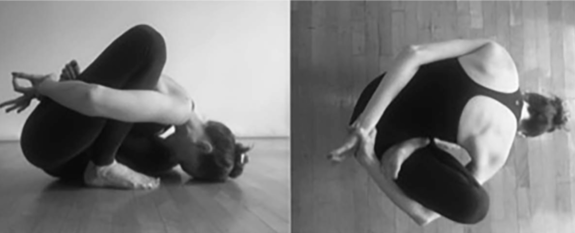Ardha Matsyendrasana: Improve Flexibility and Spine Health
페이지 정보

본문
Very hot, stale and hard to digest food should be avoided a swell as food that is too cooling or exciting. Have an empty stomach: Practise yoga two-and-a-half hours after a light meal and four hours after a heavy meal so you have time to digest your food. In her book Yoga for Depression, Amy Weintraub advocates the sudarshan kriya (SKY) as a scientifically proven method of alleviating depression. "Because breathing is closely linked to the emotions, focusing on the breath can alter your emotional state." However, the benefits are not just for those with depression. That realisation of love can never come so long as there is the least desire in the heart, or what Shri Ramakrishna used to say, attachment for Kâma-Kânchana (sense-pleasure and wealth). Swamiji: Know them to be already struggling who desire this. Swamiji: But there must be some higher law at work in the sphere alluded to by G. C. of which we are ignorant. This class will teach you how to recover your energy when the afternoon nappy attack hits you and it wll bring your work production to optimal performance by applying convenient breathing and stretching techniques which in matter of seconds will leave you replenished and invigorated to excel for the rest of your work day!

For example, when you’re feeling unhappy, Fish pose in yoga your exhalation will be longer than your inhalation and when you’re in a great mood your inhalation will be much longer and lighter. When we’re feeling down, we tend to be drawn towards activities that increase dullness or restlessness, such as eating junk food, which is low in prana, oversleeping or watching endless hours of television, which in turn brings a heaviness to our mood. Achieving balance is not just about eliminating from your diet foods that are low in prana but, if you’re eating these, making sure you include high-prana foods as well. Being aware of foods that reduce your prana and eating less of those will also make a difference. Food: Foods high in prana include fresh vegetables (especially the green leafy ones), nuts, pulses and fresh fruit. When you’re in a positive frame of mind, your prana is naturally high. Do you not see that hundreds of Brahmins and Kâyasthas in Bengal now go secretly to eat dainties in public restaurants, and when they come out of those places pose as leaders of society and frame rules to support don't-touchism. Now look up towards your hands. We want now the spirit of the brave warrior in the battlefield of life, and not of the wooing lover who looks upon life as a pleasure-garden!
Die you must, but have a great ideal to die for, and it is better to die with a great ideal in life. It’s also great for releasing emotional tension (typically stored in the abdominal region) and lifting your mood. For this reason, backward-bending yoga poses are great for enhancing mood, opening up the respiratory system and enabling you to breathe in life. Practise regularly: For the best results, do some yoga poses every day, even if it’s just for 20 minutes. Let go of aches and pains: When you’re in a pose, it’s easier to get in touch with what’s going on in your body. You may have noticed that when your mood is low, it’s reflected in your body: your shoulders may slouch more, your chin sinks down and your spine slumps forward. Take a deep breath in as you take your arms to the side and back, lifting your chin and bringing your hips forward. As you bend forward slightly, give yourself a big hug and exhale. Bend your right knee and keep your right foot outside your left hip. Bring it over the right knee and place it around the right knee (right hip); your left knee is close to your upper body.
Stand with your feet wider than hip distance apart and begin to swing your body, twisting first to the right (breathing in) and then to the left (loudly making the sound of "ha!" as you look over your left shoulder). Begin by taking a few normal breaths in and out through the nostrils, simply becoming aware of your breath. Complete 10 breaths and then allow your breath to return to normal and rest with eyes closed. Stay for several breaths. Stay steady: Remain steady and comfortable in the pose. Let go emotionally: When you experience unpleasant situations, the effect of them is stored in your muscles and joints as tension and so sometimes you may feel tearful or angry when you’re in a pose. When you start breathing more deeply and more fully, as is taught through yogic breathing techniques, the energy available to you is enormous and the effect on your mind is tangible. State of mind: A person who meditates and takes care of their mind will automatically have more prana. Meditation eliminates negative impressions from the mind, inducing a mind state that leans towards the positive.
- 이전글15 Best Pellet Stove Fireplace Insert Bloggers You Should Follow 24.12.16
- 다음글How to write ps in a letter 24.12.16
댓글목록
등록된 댓글이 없습니다.